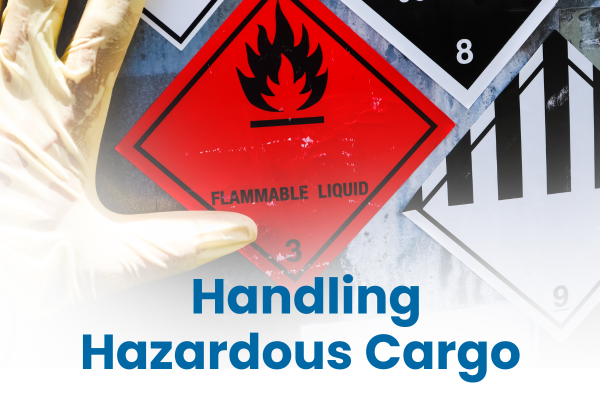Hazardous materials, also known as Hazmat or Dangerous Goods (DG) are articles or substances which are capable of posing a threat to human health, safety, property or the environment. These materials are classified based on characteristics such as flammability, toxicity, or corrosiveness and can include explosives, gases and liquids.
Shipping hazardous cargo requires a clear understanding of the classifications and regulations involved to ensure the safety of everyone involved in the transportation process. Even the slightest error in packing and documentation could result in the rejection of the cargo by the authorities.
You wouldn’t want to be responsible for an accident that causes loss of life or property, right? That is why you need to engage the services of a competent freight forwarder such as Colless Young.
According to the 2023 Allianz Safety and Shipping Review, there have been 64 reported fires on containerships in the past five years. A key factor contributing to these fires is hazardous cargo that has not been declared, mis-declared or has not been properly packed by shippers.
These include calcium hypochlorite (widely used as a bleaching agent), lithium batteries and charcoal. Non-declaration or misdeclaration of cargoes is thought to sometimes result from attempts to pay lower freight rates or to circumvent restrictions on the carriage of DGs.
There are national and international authorities who enforce the rules on DG freight:
By Sea
The International Maritime Organization (IMO) governs the agreed minimum requirements for handling and transport of cargoes and dangerous goods.
In Australia, the Australian Maritime Safety Authority (AMSA) implements the IMO agreed international minimum requirements for all safety-related aspects of the handling and transport of cargoes and dangerous goods.
Shipping dangerous goods by sea will often involve using special containers and packaging materials and providing detailed documentation about the shipment’s contents. Once properly prepared, the cargo must be loaded onto the ship in a designated hazardous goods area.
By Air
The International Air Transport Association (IATA) administers Dangerous Goods Regulations and their rules are outlined in a manual that is based on the International Civil Aviation Organizations (ICAO)’s instructions for the safe transport for hazardous cargo.
Every year more than 1.25 million dangerous goods shipments are transported by airfreight and growth is predicted to be 4.9% every year over the next 5 years. With so many DGs being shipped by air, safety regulations must be followed precisely. IATA helps identify the risks and works with ICAO to amend the regulations providing stakeholders with the most current guidelines on how to handle and ship dangerous goods safely.
Types/classifications of dangerous goods
There are nine primary classes of dangerous goods and additional sub-classes to describe the properties of all hazardous cargo appropriately. The nine classes are as follows:
| Class 1: Explosives | Class 2: Gases |
| Class 3: Flammable Liquids | Class 4: Flammable Solids |
| Class 5: Oxidising Substances | Class 6: Toxic and Infectious Substances |
| Class 7: Radioactive Material | Class 8: Corrosives |
| Class 9: Miscellaneous Dangerous Goods (This is for cargo that doesn’t fit classes 1 to 8, such as environmentally hazardous and elevated temperature substances). |
Dangerous Goods Declaration
As the shipper, you have an understanding of your product and you will need to sign and date a Dangerous Goods Declaration (DGD). This document provides detailed information on the hazardous materials being shipped, including their classification, identification, and handling instructions. It may also have information on the packaging and labelling of the materials and any special handling or transportation requirements.
The shipping process can be daunting with the ever-changing procedures and documentation related to hazardous cargo. We have staff who are trained in the requirements of DGs and, as your agent, we are here to guide you through the process.
For more information about hazardous cargo, talk to us here at Colless Young.
Contact Andrew, email enq@collessyoung.com.au Tel: +61 7 3890 0800.

